lights
Latest
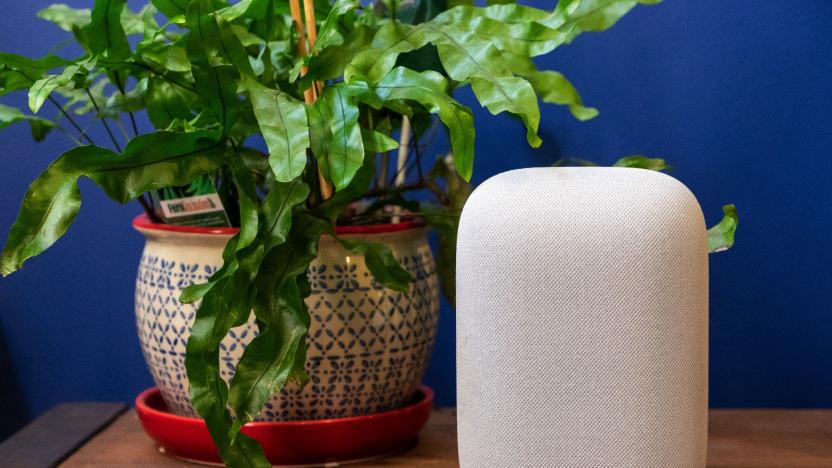
Google Assistant can finally schedule your smart lights
Google Assistant already works with Hue and other smart lights, but functionality has been limited to turning them on and off, using them with alarms and a few other features. Now, you can schedule lights and other electric devices to turn on and off at specific and even general times.

Hive's smart home devices finally work with HomeKit
A handful of Hive's smart home devices finally work with HomeKit.
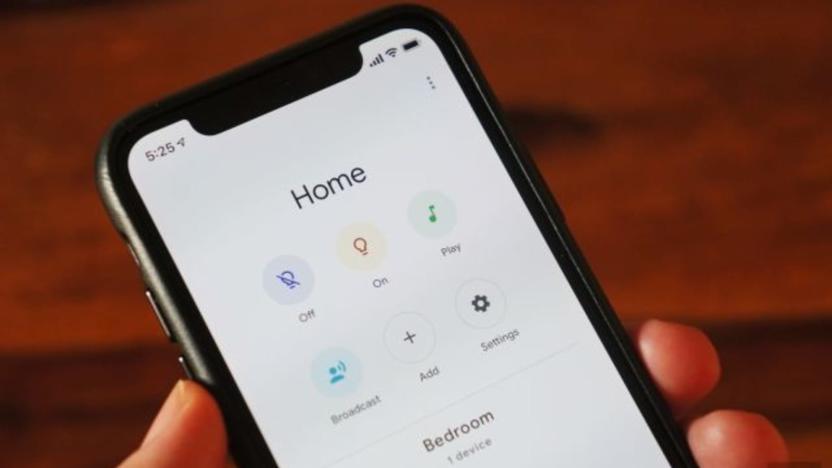
Google’s updated Home app will show Nest Cam events in its feed
iOS release notes reveal that Google is making a couple changes to its Home app. Once updated, the Feed tab will show important activity from supported devices, like your Nest Cam. Last year, Google said users would be able to watch full video clips or listen to audio clips in the Feed tab, and this update could enable that.

Teenage Engineering wants you to 'hack' its IKEA line with 3D printing
Teenage Engineering's IKEA collection, the FREKVENS line, arrives in stores this month, and Teenage Engineering is already helping customers hack the products. The company has released free, downloadable CAD files for a handful of DIY accessories that you can 3D print at home and attach to your FREKVENS speakers and lights.
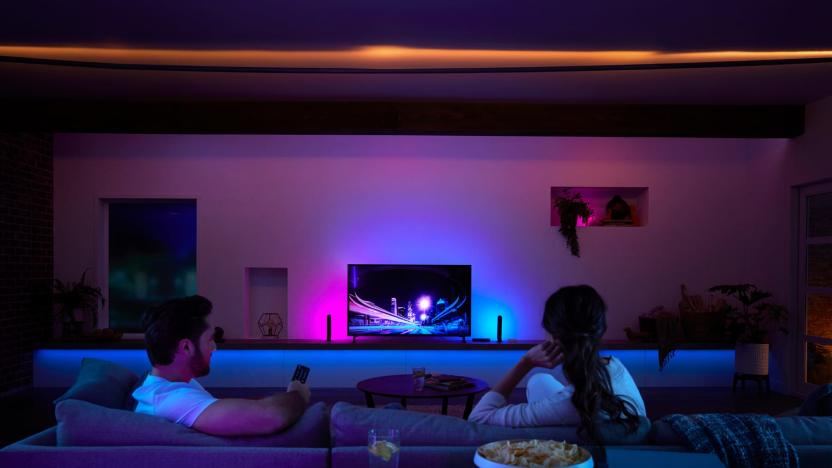
Philips is adding voice control to its Hue light and TV sync box
We cheered when Signify launched the Philips Hue Play HDMI Sync Box last September. At last, a dead-simple way to sync the company's smart lights with whatever is playing on your TV! The hardware wasn't perfect, though. It didn't have baked-in voice control, for instance, or any formal compatibility with Alexa, Siri, or the Google Assistant. For a $230 box -- and one released in 2019 -- it felt like a massive and inexcusable omission. Signify has recognized its mistake, though, and is working on a software update that will add support for all three assistants later this spring. Once it goes live, you'll be able to use your voice to turn the Sync Box on and off, change various Hue light settings and switch between HDMI devices. If you need a refresher, the svelte black slab has five HDMI slots -- one for your TV, and four for your favorite media players, game consoles and streaming boxes. The Sync Box analyzes the incoming image and then chooses the most appropriate colors and brightness settings for your smart bulbs. You can also fine-tune the experience with three different sync modes (video, music and games), a brightness slider and four intensity options (subtle, moderate, high and extreme) inside the Hue Sync app. The effect will vary, of course, depending on the number and type of Hue bulbs that you have set up. Some TV-attached lightstrips, for instance, might be more dramatic than a couple of bulbs placed behind your sofa. Don't care for voice control? No problem. Today, Signify announced that you'll soon be able to use infrared-based TV remotes to control the Sync Box. That includes basic commands -- turning the contraption on and off, and switching between different HDMI inputs -- and more complicated button inputs, provided you "teach" the Sync Box what each of them means through the Hue Sync app. Signify hopes this will make it easier to use the box everyday as part of a more complicated home theater setup.

Philips' new Hue Play box syncs your lights with your TV
It's been a long time coming, but there's now an easy way to sync your Hue lights with your TV no matter what's on-screen. Signify has introduced a Philips Hue Play HDMI Sync Box that (as its name implies) controls your smart lights based on whatever the video source might be, whether it's a game console, a Blu-ray player or a streaming media service. It's automatic and reportedly lag-free, and you can dial down the intensity so that it won't produce a dramatic light show when you're just watching a sitcom.
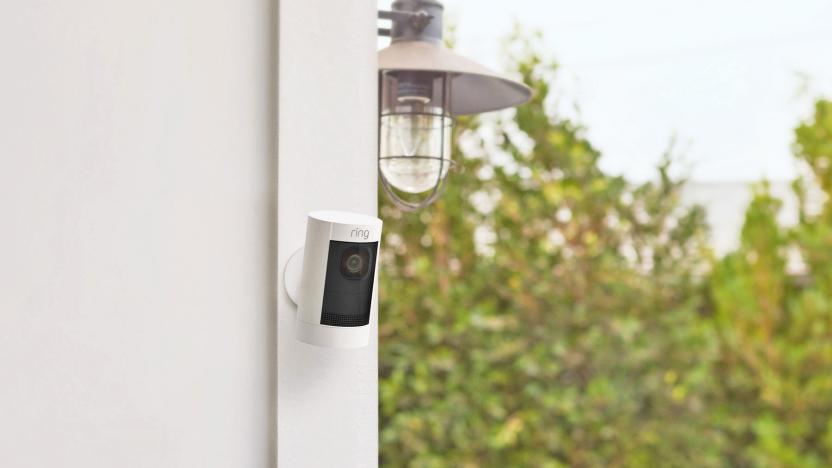
Ring adds more camera and light options to its home security line
Ring's evolution from a smart doorbell to the biggest name in home security has reached a new milestone today. The company has announced a pair of new indoor/outdoor video cameras to better compete with its rivals, as well as a series of outdoor security lights.
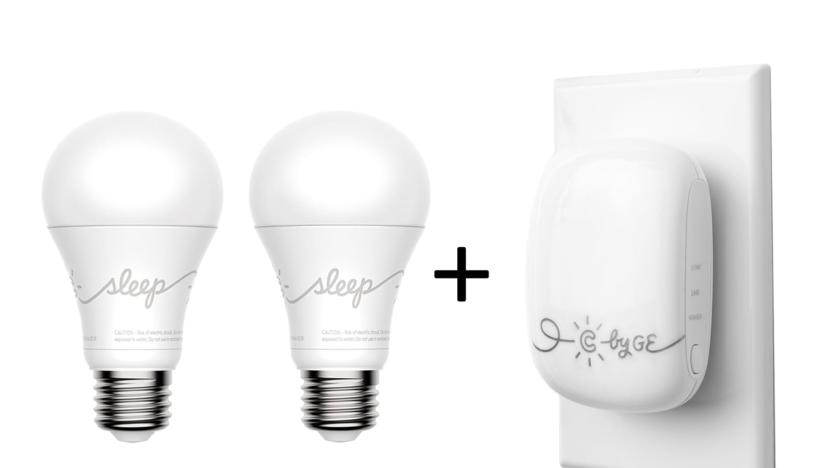
GE's latest smart lighting includes Alexa and HomeKit options
Creating a smart home can be a complicated affair, with myriad options for adding voice control and automation to your lights, window coverings, thermostats and more. GE wants to simplify your options (with its own branded products, of course) with some new smart ceiling fixtures, wall switches, and lamps for 2018.
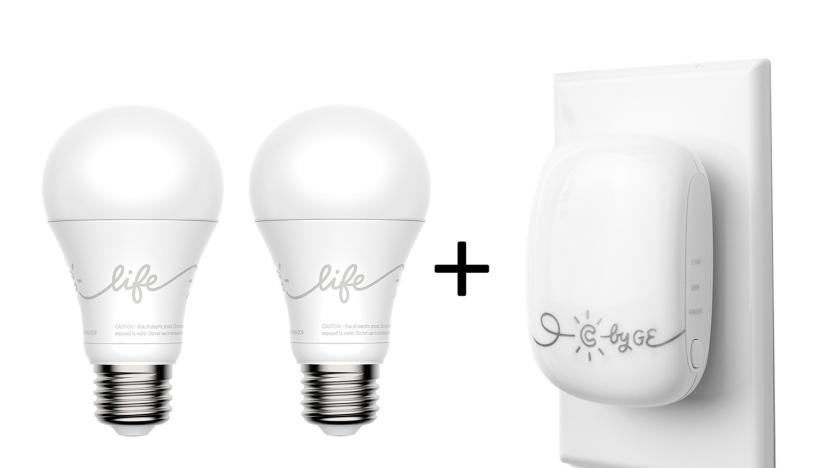
GE hub connects its smart lights to Alexa and Google
When GE introduced its latest C-series smart light bulbs, the focus was on affordability -- as they talked directly to your phone through Bluetooth, you didn't need a bridge device. That kept them out of touch of voice assistants, however, which meant replacing the whole lot if you wanted hands-free control. Well, you won't have to rethink your investment from now on: GE has introduced a hub, the C-Reach, that puts its bulbs on WiFi to enable support for Amazon's Alexa and (by the end of 2017) Google Assistant. As with most smart lighting kits, you can steer lights individually or in groups just by talking to your phone or a smart speaker.

Echo alerts you to voice or text messages with a yellow light
Now that the Echo has become a handy way to place calls and send messages, wouldn't it be nice to be able to tell them apart? Amazon is about to make it a lot easier to do just that by changing how it notifies you of voice and text messages. As before, the device signals that you're receiving calls by illuminating a green rotating ring light, but it now shows any new message, whether voice or text, via a solid yellow light.
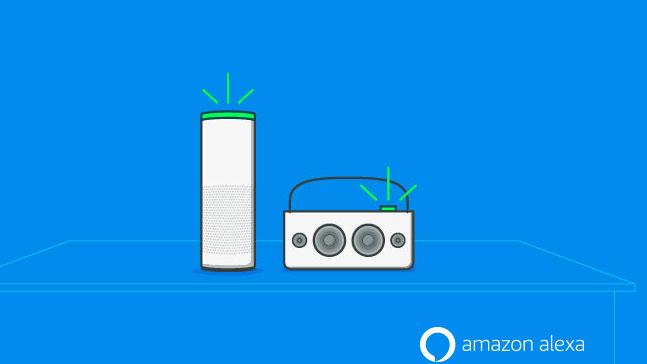
Amazon is planning push notifications for your Echo
Amazon has been updating its line of voice-assistant devices to make them more user-friendly for a while. The Tap no longer needs a physical touch to activate it and your Echo devices can make calls and leave messages. Better yet, they will soon be able to whisper and have better wake word accuracy. According to a post on Amazon's developer site, Echo devices are getting another upgrade here, too: visual notifications for skills.

Uber's Beacon is a colorful light to guide you to the right ride
While ride-hailing companies have made it easier than ever to identify your driver and the car they're driving, there's often room for mix-ups, especially when it's dark. In an attempt to bring some clarity to proceedings, Uber has today introduced Beacon, a new light that attaches to a driver's windscreen and displays a color that you specify in the app. It's only in the trial stage right now, but riders in Miami, Denver and Nashville in the US and Newcastle in the UK will start seeing them from this week.

Balight's bike LEDs light up your ride in the doofiest way possible
Twenty-nine people died in traffic-related accidents on the streets of San Francisco in 2014. Seventeen of them were pedestrians and cyclists. So when I commute through the city on a bike, there's no such thing as being too visible. Well, maybe except for when I turn on the Balight wheel LEDs. This $170 hub-mounted safety light device goes far beyond alerting drivers to your presence: It practically screams, "Hey, everybody, look at me, I'm on a bike!" I'm not sure that's a good thing.

London's entire Boris bike fleet will soon have laser lights
Boris bikes have never been London's trendiest form of public transportation, although they picked up some much-needed style points earlier this year thanks to a laser-projected light system. At the time it was limited to 250 two-wheelers, but today Transport for London (TfL) has announced the trial will be expanded to all 11,500 Santander bicycles in early 2016. The Blaze Laserlight projects a green version of the standard cyclist symbol six meters in front of the rider, making them visible to pedestrians and traffic looking to pull out up ahead.
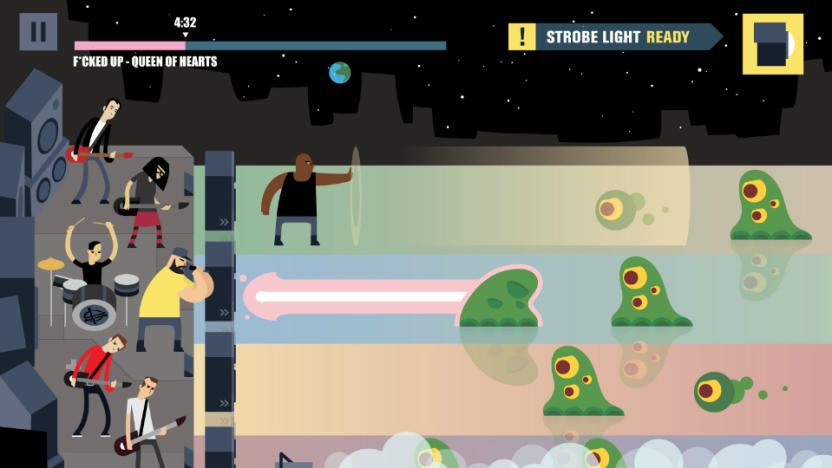
If 'Rock Band' is Coachella, 'Loud on Planet X' is CBGB
Loud on Planet X is the ultimate independent artist's dream: It's an indie game all about indie bands. The actual gameplay is a blend of two familiar mechanics, a Plants vs. Zombies-style tower-defense system and a rhythm game reminiscent of Patapon that has players making sweet, sweet music while they fend off streams of hostile, blobby aliens. The coolest part for music fans is that Loud lets you play as the indie bands that it features, including Tegan and Sara, Metric, Lights, METZ, Fucked Up, July Talk, Austra and Cadence Weapon. Loud is still a work in progress, but all of the bands have been great to work with so far, Pop Sandbox studio head Alex Jansen says: "The musicians we're working with have been really incredible and genuinely excited to be involved. A lot of them are big gamers too, especially someone like Lights."

Adaptalux is a modular lighting system for macro photography
Every now and then, there are projects on Kickstarter designed for a niche group of people. Adaptalux is one of those: it's a modular, flexible and nearly pocket-sized lighting studio for macro photography and videography. The team behind Adaptalux claims that the system is capable of creating an infinite amount of illumination environments, thanks to an interchangeable design that users can customize based on their needs. For example, the Control Pod lets you choose the amount of light sources (up to five) and the color of them, as well as control the beam angle for each. And, much like the familiar gooseneck desk lamps, Adaptalux's lighting arms can be bent and twisted almost any way you want.

The Hue Go puts wireless lighting anywhere in your house
Philips has just unveiled a mobile addition to its venerable line of programmable LED Hue bulbs. It's called the Hue Go and is basically a salad bowl of light that you can hold in your lap (because people do that apparently?) or use as an accent or serve as a luminescent centerpiece much like the Hue Beyond or Luminaires. But unlike these earlier designs, the Go isn't tethered to a wall socket. Each unit reportedly lasts about three hours on a single charge and can be controlled through the associated mobile app (or the Hue Tap) just like a standard Hue bulb.

San Francisco's Bay Bridge keeps its computer-controlled lights
The 25,000 computer-driven LED lights on San Francisco's Bay Bridge were only meant to be part of a two-year art project, but it looks like they'll eventually become a permanent (and frankly, rather pretty) part of the landscape. The non-profit behind the lights, Illuminate the Arts, has raised the $4 million necessary to both cover the costs of new gear and reinstall the lights after they're taken down during cable maintenance. From then on, transportation authority Caltrans will pay the $250,000 a year it takes to keep the illumination running. There will be a period where the bridge will go dark, but it should resume shining in January 2016 -- conveniently, just ahead of the influx of tourists attending Super Bowl 50. Not all San Franciscans are fans of the installation (they argue that it's out of sync with the region), but these LEDs are here to stay. [Image credit: Chris Marra, Flickr]

Nimble-fingered strategists will love Light 'em Up
It would seem there is a never-ending influx of strategy and puzzle-related games coming down the App Store pike, and for good reason. There is a burgeoning group of fans waiting to try them, critique them, and talk about them to their friends and on social media. With this kind of context, Light 'em Up should find a niche very quickly. The free app is available for iPhone, iPad, and iPod Touch and is optimized for iPhone 5, running on iOS 6.0 or later. The game's basic premise is simple: Building on a puzzle-assembly motif, the player must connect various glass tubes and other pieces, such as light bulbs, in order to make an electronic connection and light up the bulb and tubes. The player must tap each tube and bulb to rotate them in order to make the proper connection. This sounds simple enough, and in the early stages it is. Players will find themselves racing against both an allotted time (which changes depending on the level) as well as an allotted number of taps (each tap counts as one move). Use up all your moves, or fail to light all the bulbs \by the end of the given time, and you have to start over. This game is genius, simply put. I'm a thinker and armchair strategist, so these kinds of puzzle-esque games appeal to me. I like having to think ahead, plan, and ponder. The interesting thing about this game is that you may have to tap the tube or bulb more than once to get it into the proper position, which is both a good and bad thing. It's good because it allows one a process of elimination in figuring out which connections will work and which won't. But it also uses up one's allotted moves, which can be frustrating and detrimental to advancing in the game. Granted, as one grows in their abilities and strategies this may become less of a problem, but it was nerve-wracking and annoying on higher levels, some of which have less time. Another interesting feature which I had not anticipated is that not every single tube has to be used. At first, I was concerned because I was making all of the necessary connections and even lighting up all of the bulbs but had several pieces unused. I am not entirely sure of the purpose for this. I do not know if the game designers have more than one possible solution for each level (which would be likely, though I typically stuck with the first one that worked) which necessitated the extra pieces, or if perhaps they are supposed to test the player's ability to know which pieces are necessary and which are extraneous (which will thus save both time and moves). I'm not sure. But it was nice to know I was lighting all of the bulbs without having to rely on all of the tubes given. The game offers a total of ninety levels and players typically cannot jump to different levels without playing the preceding ones. There is an option of unlocking some (not all) future levels without playing the previous ones, but this costs US$0.99 per unlock. Players can disable in-app purchases to bypass this option. My biggest two critiques of the game are as follows. The first is the presence of ads. This is a sticky issue for me, as I realize free apps have to make some kind of income. However, I feel the placement of the ads is meant to be deliberately annoying. The banners on the bottom of the screen are not really a problem; it is the banner across the middle of the screen after every successful completion of the level that is the worst. Additionally, there are regularly pop-up ads that fill the screen (these can be closed and only occur once every other level or so), along with video ads that come up randomly. The videos were the worst for me. The first time the screen went black in order to start playing one, I actually thought something was wrong with my iPhone; I wasn't accustomed to it going black for no reason. They are not very long, typically only fifteen seconds to a minute in length, but they do distract and annoy. The good thing is that players have the option of purchasing an in-app ad-free version, but this also costs US$0.99. I ended up purchasing this because during later levels, players must drag the screen different places to build extended parts of the puzzle, and the ads were getting in the way. So, I really don't like having to pay money (in a free app!) to avoid ads, but most players will need to pick this option. The other critique I am genuinely on the fence about: time limits. I have zero problem with limits in themselves, as having to complete tasks within a certain time frame heightens both the challenge and the strategy of gameplay. However, in at least one level, it appeared next to impossible to complete the entire puzzle in the fifteen seconds I was given. (In comparison, other, sometimes less difficult puzzles in later levels were given as much as a minute and fifteen seconds). This, coupled with the banner ad blocking my view, made me have to play this level over and over again. I lost count of how many times, actually. This felt odd because the time limits seemed uneven. I don't care if different levels have different times, but when a later, easier puzzle is given either a much longer time limit or a larger move limit, and this puzzle gets only fifteen seconds, there seems to be an issue. Despite these issues, Light 'em Up remains a fantastic, addictive, and brilliant game. If you're looking for a nifty brain-stretcher that will light up your screen (literally), thoughtful players needn't look any further than this.

Toyota's LED-lit concept car lets your kids customize the hood
If you complained about your family's drab-looking car when you were a kid, you're going to love the latest incarnation of Toyota's Camatte concept. The vehicle lets children (and creative adults) customize the look by translating their drawings to nearly 7,000 LED lights on the hood; you could change styles at a moment's notice without having to swap panels (as with the 2012 Camatte) or break out some paint. There's no word on the possibility of this technology reaching production models, although we wouldn't count on it in the near future -- even if higher energy consumption isn't a factor, a light-up hood could get quite expensive. Still, Camatte raises hope that cars will one day be as unique as their drivers.









